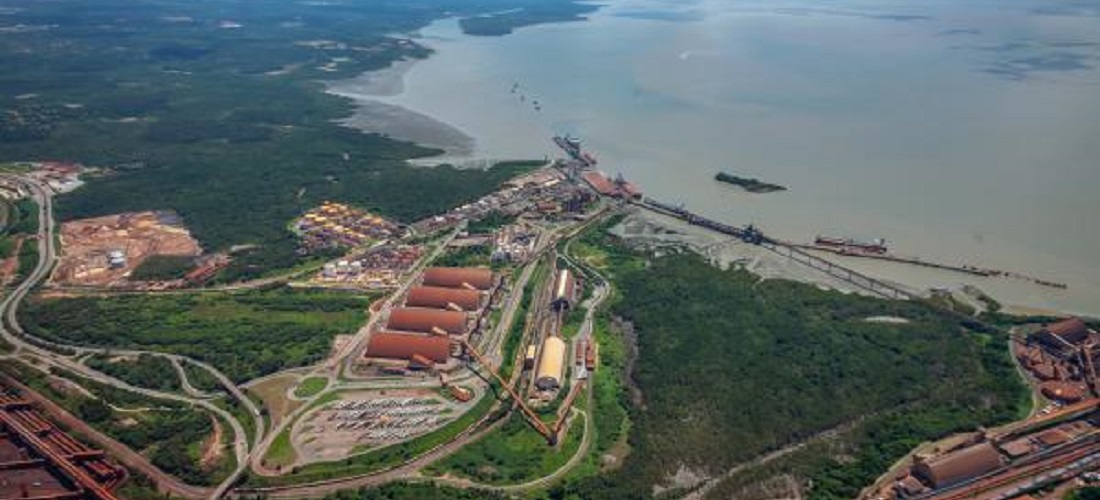
Cargo throughput in Brazil drops 3.3% in 1H22
Aug, 15, 2022 Posted by Gabriel MalheirosWeek 202233
Maritime transportation cargo throughput fell by 3.3% in the 1st half of 2022 (1H22) compared to the same period of last year in Brazil. In the first six months of the year, Brazilian ports saw the movement of 581.3 million tonnes of cargo compared to 600.4 million from January to June 2021. Compared to the 1st half of 2020, the increase was 7.3%.
The data are from Antaq (National Agency for Waterway Transport) and were released this Monday (Aug. 15, 2022).
The products that most brought the average down were: iron ore, soybeans, and crude oil. The biggest reason behind this decline was the lockdowns and the closing of ports in China, Brazil’s primary customer in the international arena.
According to the general director of Antaq, Eduardo Nery, the sector is expected to recover in the 2nd semester. Antaq projects a throughput of 631 million tonnes in the 2nd semester, representing an increase of 2.9% compared to the same period in 2021, as well as 1.2 billion tonnes handled in 2022, a slight decrease of 0.2% compared to the entire year of 2021.
Here are the results by cargo type in the 1st semester:
- Solid bulk: -4.4%;
- Liquid bulk: -4.5%;
- Containers: -4.4%;
- General loose cargo: +18,6%.
The increase in general cargo was driven by the rise in pulp handling, which grew by 27%. Another product that also had a hike in throughput was fertilizers, which presented a growth of 14.1%. The main reason for the increase was the search for building up fertilizer stocks because of the risk of shortages caused by the war between Russia and Ukraine.
The port sector in Brazil has faced a shortage of containers since 2020. The reasons include a shift in global consumption triggered by the pandemic, which increased the use of computers, computer equipment, television, and air conditioning, among other things. This resulted in a rise in the cost of freight for containerized cargo as well as a delay in the transportation of other commodities throughout the world.
As a solution for transporting coffee traditionally transported in container ships, shipping companies used break-bulk vessels, where coffee beans are stored in sacks.
Check out the graph below for a comparison of Brazilian container shipments over the previous four years. The following data comes from the platform DataLiner:
Brazilian container exports (Year-to-date) | Jan – Jun | 2019 – 2022 | TEUs
Source: DataLiner (click here to request a demo)
The table below compares container imports in the first half of the last four years. The following data is also from the DataLiner:
Brazilian container imports (Year-to-date) | Jan – Jun | 2019 – 2022 | TEUs
Source: DataLiner (click here to request a demo)
Ports in Brazil’s north
For the first time in history, the so-called Amazon arc, which encompasses port terminals in the North region, surpassed the number of soybeans and corn operations compared to the South, Northeast, and Southeast ports. Approximatelly 41.5 million tonnes were handled in the ports of Brazil’s north, over 40 million in other regions.
Fleets and companies
The number of Brazilian shipping companies has also increased in the country. There were 1,163 registered Brazilian firms in the first half of 2021 and 1,181 registered in the first six months of 2022. From January to June of last year, there were 5,474 vessels in the fleet, while the number jumped to 5,647 in the same period this year.
Source: Poder360
To read the full original article, please go to: https://www.poder360.com.br/economia/movimentacao-de-carga-nos-portos-cai-33-no-1o-semestre/
-
Other Cargo
Sep, 09, 2022
0
40t pulp cargo fall on vessel in the Port of Santos
-
Ports and Terminals
Dec, 13, 2021
0
Coamo opens new terminal in Paranaguá
-
Ports and Terminals
Dec, 26, 2024
0
STJ Court Lifts Injunction Blocking Santos Port Authority from Managing Itajaí Port
-
Grains
Oct, 30, 2023
0
Drought Alters Grain Logistics in Northern Brazil, Shifting Cargo to Southeast Ports

